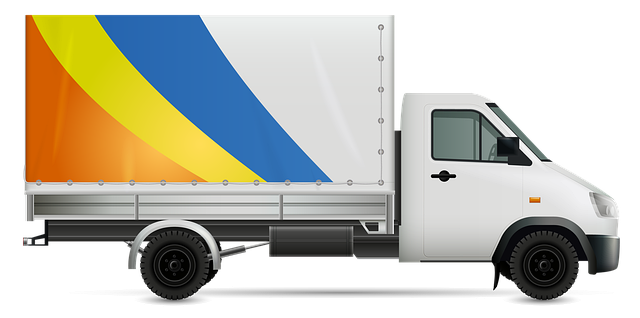Looking to register your car in California? This comprehensive guide walks you through the entire process, from understanding essential requirements to gathering vital documents. Learn how to verify your vehicle’s VIN (vehicle identification number) using online tools for added convenience. We’ll also cover visiting a DMV office or exploring alternative methods, along with paying fees and completing registration. Ensure everything is in order with our step-by-step instructions, including effective vin verifier techniques.
- Understand the Requirements for Car Registration in California
- Gather Necessary Documents for Car Registration
- Verify the Vehicle's VIN (Vehicle Identification Number) using Online Tools
- Visit a California Department of Motor Vehicles (DMV) Office or Use an Alternative Method
- Pay the Required Fees and Complete the Registration Process
Understand the Requirements for Car Registration in California

Before diving into the registration process, it’s crucial to understand the requirements for car registration in California. The state Department of Motor Vehicles (DMV) mandates several key steps and documents for a successful registration. One essential element is ensuring your vehicle has a valid and accurate Vehicle Identification Number (VIN). This unique 17-character code serves as the cornerstone for identifying your car, so it’s vital to have it verified accurately.
A commonly preferred method in California is utilizing a mobile VIN inspection or verification service. These services offer convenience by coming to you, whether at home or work. Professional inspectors use specialized tools to cross-reference your VIN with reliable databases, ensuring its authenticity and providing peace of mind during the registration process. This step is particularly beneficial, as incorrect or missing VIN information can lead to delays or even registration denial.
Gather Necessary Documents for Car Registration

Before you begin the registration process, it’s crucial to gather all the essential documents required by the California Department of Motor Vehicles (DMV). One critical step is to verify your vehicle’s unique identifier, known as the Vehicle Identification Number (VIN), using a reliable method such as a mobile VIN verifier or conducting a traditional VIN inspection. This process ensures accuracy and speeds up the registration.
Additionally, you’ll need to have in hand the title or registration certificate from the previous owner, proof of insurance, and a completed application form for vehicle registration. These documents work together to prove your ownership and ensure your car’s legal status in California. Whether you opt for a mobile VIN verification service or conduct the inspection yourself, this initial step is vital to a smooth registration experience.
Verify the Vehicle's VIN (Vehicle Identification Number) using Online Tools

Verifying the Vehicle’s VIN (Vehicle Identification Number) is a crucial step in the car registration process in California. Luckily, there are online tools available that make this task quick and convenient. Start by visiting reliable websites offering VIN verification services, which often include mobile vin verifier options. These platforms allow you to input your vehicle’s unique 17-digit code to access detailed information about its history, including previous owners, maintenance records, and any reported accidents or issues.
Using a mobile vin verifier can save you time as it provides instant results. This method is particularly useful when preparing for the registration process, as it ensures that your car’s history is clean and free from any red flags. With just a few clicks, you can perform a vin inspection to gather essential data that will make the registration procedure smoother and more efficient.
Visit a California Department of Motor Vehicles (DMV) Office or Use an Alternative Method

Whether you’re a new driver or transferring your registration, one of the first steps to owning a car in California is visiting a local Department of Motor Vehicles (DMV) office. Here, you’ll initiate the registration process by providing necessary documents and information, including proof of ownership via a Vehicle Identification Number (VIN) verifier. This ensures the accuracy of your vehicle’s details and facilitates a smooth registration experience.
For those who prefer alternative methods, several options are available. Mobile VIN verification services, for instance, offer a convenient way to complete the process from the comfort of your home or on the go. These services use advanced technology to validate your vehicle’s information, providing an efficient and secure means of registration—a significant advantage in today’s fast-paced world.
Pay the Required Fees and Complete the Registration Process

After gathering all the essential documents, it’s time to pay the registration fees and complete the process with the California Department of Motor Vehicles (DMV). The costs involved will depend on your vehicle type and any additional services like a title transfer or emissions testing. You can usually pay these fees online, by mail, or in person at a DMV office.
During this stage, ensure you accurately enter your vehicle’s information, including its unique VIN (Vehicle Identification Number), which is crucial for verification purposes. A vin verifier tool, whether used online or through a mobile vin inspection, can help cross-check the details against official databases to streamline the registration process and prevent any potential errors.
Registering a car in California involves understanding specific requirements, gathering essential documents, verifying the Vehicle Identification Number (VIN) using online tools like VIN verifier, visiting a local DMV office or exploring alternative methods, and paying applicable fees. By diligently following these steps, you can ensure a smooth registration process for your vehicle in the Golden State.
